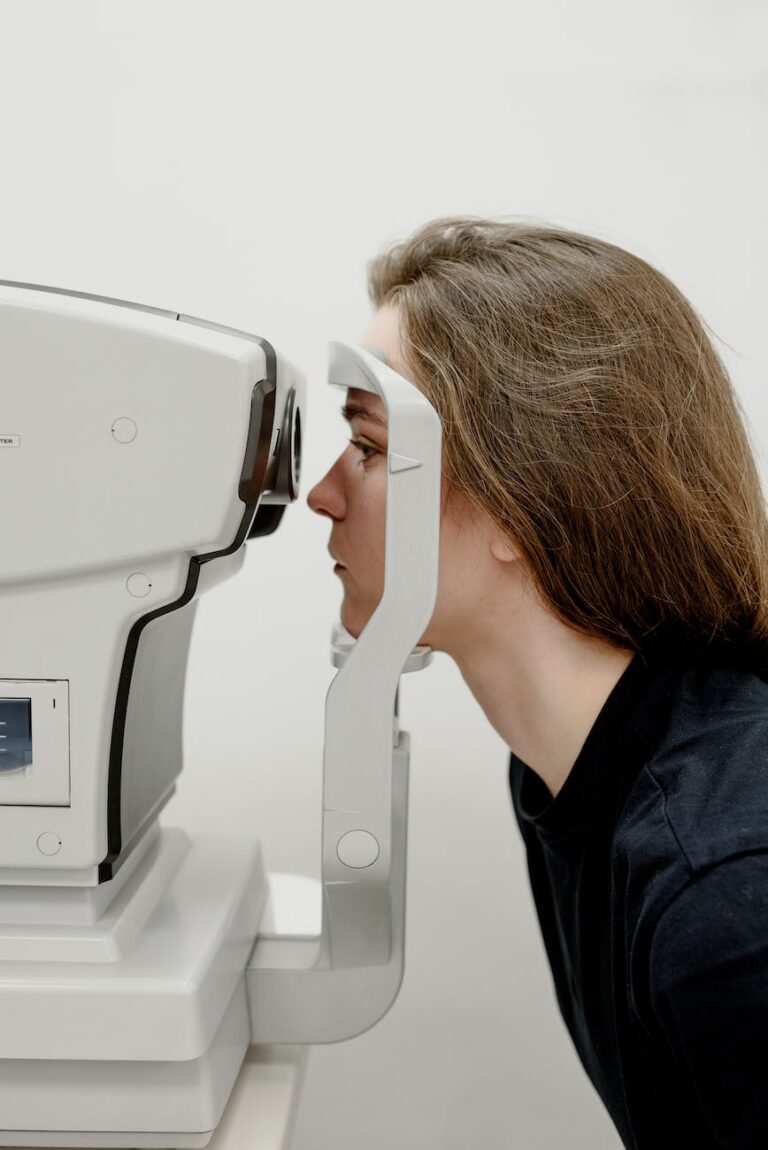The Importance of Engine Diagnostics
Understanding the importance of engine diagnostics is crucial for car owners to maintain the health and performance of their vehicles. Engine diagnostics involve the use of specialized equipment to identify and troubleshoot potential issues within the engine system. Let’s delve into the significance of engine diagnostics and the benefits of using professional car diagnostic tools.
Understanding Engine Diagnostics
Engine diagnostics refer to the process of assessing and analyzing the various components and systems within a vehicle’s engine. These diagnostics involve scanning the car’s computer system, retrieving diagnostic trouble codes (DTCs), and monitoring real-time data to identify any abnormalities or malfunctions. By conducting engine diagnostics, car owners and mechanics can gain valuable insights into the health and performance of the engine, allowing for timely repairs and maintenance.
Car diagnostic tests are typically performed when a vehicle’s dashboard displays a “check engine” signal or other warning lights. However, they can also be part of regular maintenance appointments to proactively identify potential issues before they escalate. While car diagnostic tests are not always 100% accurate, they provide valuable information that helps mechanics narrow down the location of a problem and facilitate quicker repairs.
Benefits of Professional Car Diagnostic Tools
Using professional car diagnostic tools, such as OBD-II scan tools, offers several benefits for car owners and mechanics alike. These tools are designed to connect to a vehicle’s OBD-II port, retrieving diagnostic information from the car’s computer system, including engine diagnostic codes and sensor data.
Here are some key advantages of professional car diagnostic tools:
-
Efficient Problem Identification: Professional car diagnostic tools enable mechanics to quickly locate the source of a vehicle’s problem. By retrieving diagnostic trouble codes, mechanics can pinpoint the specific issues affecting the engine, transmission, oil tank, throttle, and other components. This eliminates guesswork and allows mechanics to efficiently address the root cause of the problem, saving time and reducing the risk of recurring issues.
-
Time and Cost Savings: Utilizing professional car diagnostic tools can save car owners money on diagnostic costs, as they eliminate the need for multiple visits to a mechanic. With the ability to identify issues accurately, mechanics can focus on repairing the specific problem, reducing the chances of further damage or unnecessary repairs. Additionally, car owners who have their own car diagnostic tools can perform basic diagnostics at home, avoiding costly diagnostic fees.
-
Portability and Compatibility: Many car diagnostic tools are portable and compatible with various vehicles. This allows car owners and mechanics to use the diagnostic tool on multiple cars, making it a versatile investment. With the ability to access real-time data and retrieve diagnostic trouble codes on the go, car diagnostic tools provide convenience and flexibility in diagnosing engine issues.
When considering the purchase of a car diagnostic tool, it’s important to assess your needs, evaluate functionality and capabilities, and consider reliability and accuracy. By choosing the right diagnostic tool, car owners can effectively diagnose and troubleshoot engine problems, ensuring the optimal performance and longevity of their vehicles.
In the next section, we will explore different types of car diagnostic equipment, including OBD-II scan tools, multimeters, advanced scan tools, compression testers, and smoke machines, to provide a comprehensive understanding of the options available for engine diagnostics.
Types of Car Diagnostic Equipment
When it comes to diagnosing engine issues, having the right engine diagnostic equipment can make all the difference. There are several types of tools and devices available that can help identify and troubleshoot problems in your vehicle. Let’s explore some of the most commonly used car diagnostic equipment:
OBD-II Scan Tools
The OBD-II (On-Board Diagnostic) scan tool is a vital tool in modern vehicle diagnostics. It connects to the vehicle’s OBD-II port and retrieves diagnostic information from the car’s computer system, including fault codes and sensor data. This tool is essential for identifying issues and providing valuable insights into the overall health of your vehicle (26th Street Auto).
OBD-II scan tools come in various forms, including handheld devices, smartphone apps, and PC-based software. They provide real-time data monitoring, allowing you to track engine parameters and sensor readings. These tools are invaluable for both professional mechanics and car owners who want to have a better understanding of their vehicle’s performance.
Multimeters for Electrical Troubleshooting
Multimeters are versatile diagnostic tools used for electrical troubleshooting in vehicles. They measure voltage, current, and resistance in electrical circuits, allowing technicians to identify and resolve electrical problems. Whether you’re dealing with faulty wiring, a malfunctioning sensor, or a dead battery, a multimeter can help you pinpoint the issue and make accurate repairs (26th Street Auto).
Advanced Scan Tools for Comprehensive Diagnostics
For more comprehensive diagnostics, advanced scan tools are the go-to choice. These tools offer a wide range of functionalities, including live data streams, component tests, service light resets, and even module programming. They are capable of communicating with multiple vehicle systems, providing detailed information about the engine, transmission, ABS, airbags, and more. Advanced scan tools are commonly used by professional mechanics to perform in-depth diagnostics and repairs (26th Street Auto).
Compression Testers for Engine Issues
Compression testers are essential tools for diagnosing engine-related issues. They measure the compression pressure inside each cylinder, helping identify potential problems such as worn piston rings, valve leaks, or a blown head gasket. By performing a compression test, you can assess the overall health and efficiency of your engine. This tool is particularly useful when troubleshooting engine performance issues and diagnosing potential internal engine problems (26th Street Auto).
Smoke Machines for Vacuum Leak Detection
Vacuum leaks can cause various engine problems, affecting performance and fuel efficiency. Smoke machines are valuable tools for diagnosing vacuum leaks in a vehicle’s intake or exhaust system. By introducing smoke into the system, these machines can reveal leaks through cracks, faulty hoses, or seals. The smoke escapes through the leaks, making them visible and helping you identify and fix the problem areas. Smoke machines are effective tools for pinpointing elusive vacuum leaks and ensuring the proper functioning of your engine (26th Street Auto).
By utilizing these different types of car diagnostic equipment, you can effectively troubleshoot and diagnose engine issues. Whether you opt for an OBD-II scan tool, a multimeter, an advanced scan tool, a compression tester, or a smoke machine, having the right tools at your disposal can empower you to make informed decisions about your vehicle’s maintenance and repair needs.
The Role of Car Diagnostic Tests
When it comes to maintaining your vehicle’s health, car diagnostic tests play a crucial role. These tests involve digital analyses of your car’s computer systems and components, scanning for issues with vital components such as the engine, transmission, oil tank, and throttle (J.D. Power). Let’s explore the key aspects of car diagnostic tests, including what they are, when to perform them, and their limitations.
What Are Car Diagnostic Tests?
Car diagnostic tests are comprehensive evaluations performed on a vehicle’s electronic systems to identify and assess any potential issues or malfunctions. These tests provide valuable insights into the health and performance of various components, allowing mechanics to pinpoint specific problems and initiate appropriate repairs.
During a car diagnostic test, specialized equipment is used to communicate with the car’s onboard computer system, retrieving valuable data, and identifying any diagnostic trouble codes (DTCs) that may be present. These codes provide valuable clues about the specific area or system that requires attention, enabling mechanics to diagnose and address the underlying issues effectively.
When to Perform Car Diagnostic Tests
Car diagnostic tests are often carried out when a vehicle’s dashboard displays a “check engine” signal or other warning light illuminations. These warning lights indicate that the car’s computer system has detected a potential issue. However, car diagnostic tests are not limited to troubleshooting problems. They are also performed during regular maintenance appointments to ensure the vehicle’s continued optimal performance and to catch any potential issues before they escalate.
By conducting routine diagnostic tests, you can proactively address emerging problems, potentially saving you from costly repairs down the road. Regular diagnostic tests are particularly important for older vehicles or those with a higher mileage, as they are more prone to developing issues over time.
Limitations of Car Diagnostic Tests
While car diagnostic tests are highly valuable in identifying potential issues, it’s important to understand their limitations. Diagnostic tests can narrow down the location of a problem, but they do not always provide a precise diagnosis of the underlying cause. Further inspection and analysis by experienced mechanics may be required to accurately diagnose and resolve complex issues.
Additionally, car diagnostic tests rely on the accuracy and reliability of the equipment used, as well as the competency of the technician performing the test. It is crucial to have a skilled and knowledgeable professional conduct the diagnostic test to ensure accurate results and avoid misinterpretation.
Another limitation of car diagnostic tests is that they are unable to detect issues that are not related to the car’s computer systems. Mechanical problems, such as a worn-out clutch or malfunctioning suspension, may not be picked up by the diagnostic test. In such cases, a thorough physical inspection by a trained mechanic is necessary to identify and address these issues.
Understanding the role of car diagnostic tests is essential for every car owner. By performing these tests when necessary and addressing any identified issues promptly, you can ensure the longevity and reliability of your vehicle.
In the next section, we will delve deeper into one of the primary tools used for car diagnostic tests – OBD-II scan tools. These devices offer valuable insights into a vehicle’s performance by retrieving diagnostic trouble codes (DTCs) and providing real-time data monitoring. Stay tuned to learn more about their functionalities and benefits.
Choosing the Right Diagnostic Tool
When it comes to selecting the appropriate engine diagnostic equipment, it’s essential to consider factors such as your specific needs and compatibility, functionality and capabilities, reliability and accuracy, as well as value and quality.
Assessing Your Needs and Compatibility
Before investing in a diagnostic tool, it is crucial to assess your needs based on the type, frequency, and severity of the automotive problems you encounter. Consider the specific make, model, and year of the vehicles you work on, as well as the protocols and systems you need to access. This will help ensure that the diagnostic tool you choose is compatible with the vehicles you handle, providing accurate and reliable results (LinkedIn).
Evaluating Functionality and Capabilities
The functionality and capabilities of a diagnostic tool play a significant role in its effectiveness. Evaluate what functions and capabilities the tool offers, such as reading and clearing diagnostic trouble codes (DTCs), accessing real-time data monitoring, and performing advanced diagnostic procedures. User-friendliness and ease of navigation should also be considered to ensure a smooth diagnostic process (LinkedIn).
Reliability and Accuracy of Diagnostic Tools
Reliability and accuracy are crucial aspects to consider when selecting a diagnostic tool. Reading user reviews and ratings from automotive professionals who have used the tool can provide valuable insights into its performance. Additionally, testing the tool yourself, if possible, can help verify its reliability and accuracy in detecting and diagnosing engine issues (LinkedIn).
Considering Value and Quality
When choosing an engine diagnostic tool, it’s important to strike a balance between value and quality. Compare prices and availability of different tools, but remember that the cheapest option may not always be the most reliable. Consider the reputation and trustworthiness of the manufacturer or supplier, as well as any additional features or warranties offered. Investing in a high-quality diagnostic tool can provide long-term benefits, saving you time and money in the maintenance and repair of your vehicle.
By carefully assessing your needs, evaluating functionality and capabilities, considering reliability and accuracy, and weighing value and quality, you can confidently choose the right diagnostic tool for your engine diagnostic needs. Remember to always refer to the manufacturer’s instructions and guidelines for proper usage and maintenance of the tool.
Benefits of Owning a Code Scanner
When it comes to engine diagnostics, owning a code scanner is an empowering tool for car owners. A code scanner, also known as an OBD-II scan tool or car diagnostic scanner, allows you to access the onboard diagnostic system of your vehicle and retrieve diagnostic trouble codes (DTCs). Let’s explore the benefits of owning a code scanner for your car.
Saving Money on Diagnostic Costs
One of the primary advantages of owning a code scanner is the potential cost savings on diagnostic expenses. By plugging in the scanner to the OBD-II connector in your vehicle, you can perform your own diagnostics, eliminating the need for expensive trips to the mechanic for simple issues that can be easily identified and resolved with a code scanner (Tear-A-Part). This puts you in control of your car’s diagnostics and allows you to tackle minor problems on your own, potentially saving you time and money in the process.
Assessing the Severity of Issues
The check engine light in your car can be a cause for concern, but with a code scanner, you can read the codes and assess the severity of the problem indicated by the light. This helps you determine whether immediate attention is necessary or if the issue can be addressed at a later time (Tear-A-Part). Understanding the severity of the problem allows you to make informed decisions about when and how to address the issue, providing peace of mind and potentially preventing further damage to your vehicle.
Portability and Compatibility of Code Scanners
Code scanners are designed to be portable and easy to bring along on road trips. This ensures that you have access to diagnostic information even when you’re away from home. If the check engine light comes on while traveling, having a code scanner on hand allows you to quickly retrieve diagnostic trouble codes and assess the situation. Additionally, code scanners are compatible across multiple vehicles due to the standardized On-Board Diagnostic (OBD-II) system implemented by vehicle manufacturers in 1996. This means you can purchase one scanner and use it on different vehicles without needing to buy a new one each time (Tear-A-Part). The portability and compatibility of code scanners provide convenience and flexibility for car owners.
Owning a code scanner empowers car owners to take control of their vehicle’s diagnostics, potentially saving money on diagnostic costs, assessing the severity of issues, and enjoying the portability and compatibility of the scanner. With the ability to read diagnostic trouble codes and access real-time data monitoring, a code scanner is a valuable tool for car maintenance and peace of mind.
Understanding OBD-II Scan Tools
When it comes to engine diagnostics, an essential tool in a car owner’s arsenal is the OBD-II scan tool. This tool connects to the vehicle’s OBD-II port and retrieves diagnostic information from the car’s computer system, including engine diagnostic codes and sensor data (26th Street Auto). Let’s explore the key features and benefits of using OBD-II scan tools for engine diagnostics.
Retrieving Diagnostic Trouble Codes (DTCs)
One of the primary functions of OBD-II scan tools is to read and clear diagnostic trouble codes (DTCs). These codes are generated when there is a problem with the vehicle’s systems, providing specific information about the issue at hand. By accessing the DTCs, car owners and technicians can identify the root cause of the problem and take appropriate action to rectify it (BlackboxMyCar).
Real-Time Data Monitoring
Advanced OBD-II scan tools go beyond reading and clearing DTCs. They also provide real-time data on various parameters, such as engine speed, coolant temperature, and oxygen sensor readings. This allows users to monitor the vehicle’s performance in real-time, enabling them to detect any anomalies or irregularities that may require attention. Real-time data monitoring empowers car owners to make informed decisions about their vehicle’s maintenance and performance (BlackboxMyCar).
Types of OBD-II Scan Tools
OBD-II scan tools come in different types, catering to a range of needs and expertise levels. Basic code readers provide access to diagnostic trouble codes and may offer limited data monitoring capabilities. On the other hand, more advanced diagnostic scanners offer enhanced functionality, such as live data streaming, graphing, and even the ability to perform advanced diagnostic tests. The choice of OBD-II scan tool depends on the user’s requirements and level of expertise (BlackboxMyCar).
Ensuring Compatibility with Your Vehicle
Before purchasing an OBD-II scan tool, it is crucial to ensure compatibility with your vehicle’s make and model. Not all scan tools work with all vehicles, as different vehicles may have different OBD-II protocols. Checking the compatibility list of the scan tool is essential to ensure it will work effectively with your specific vehicle. This prevents any compatibility issues and ensures a seamless diagnostic experience (BlackboxMyCar).
By understanding the features and benefits of OBD-II scan tools, car owners can effectively diagnose engine issues, retrieve diagnostic trouble codes, and monitor their vehicle’s performance in real-time. Whether you choose a basic code reader or an advanced diagnostic scanner, these tools can provide valuable insights into your vehicle’s health and help you make informed decisions regarding maintenance and repairs.







